With their rusty-red fur, expressive eyes, and playful antics, red pandas have captured the hearts of animal enthusiasts worldwide. These charismatic mammals possess a unique combination of physical traits and behaviors that make them irresistibly adorable, earning them a special place in popular culture and conservation efforts alike. Despite being classified as endangered, their charm has helped raise awareness about their plight and the importance of protecting their dwindling habitats. This article explores the many facets that contribute to the red panda’s exceptional appeal, from their distinctive appearance to their endearing behaviors.
The Teddy Bear Face

Red pandas possess one of the most endearing facial structures in the animal kingdom. Their rounded faces feature a distinctive white pattern – white fur surrounds their muzzle, dots their cheeks, and adorns the area above their eyes, creating what appears to be expressive eyebrows. This facial patterning creates a permanent look of gentle curiosity that humans find irresistible. The contrast between their rusty-red primary fur color and these white facial markings enhances their appeal, drawing attention to their dark, forward-facing eyes that convey an alert, intelligent expression. Evolutionary biologists suggest these facial features may have developed as adaptations for their arboreal lifestyle, but the happy coincidence is a face that triggers our innate response to cuteness.
Their Compact, Fluffy Bodies

Red pandas possess perfectly proportioned bodies that hit all the markers of what humans perceive as “cute.” They typically weigh between 7 and 14 pounds – about the size of a large domestic cat – with a body length of 20 to 25 inches, plus an additional 11 to 19 inches of tail. This compact size, combined with their exceptionally dense fur (which provides insulation against the cold Himalayan climate), gives them a plush, huggable appearance. Their round bodies and somewhat short limbs contribute to their endearing waddle when walking on the ground. The thick fur also makes them appear larger and more rounded than they actually are, triggering the “baby schema” response in humans – an evolutionary mechanism that makes us find round, soft-looking creatures inherently appealing.
The Magnificent Tail
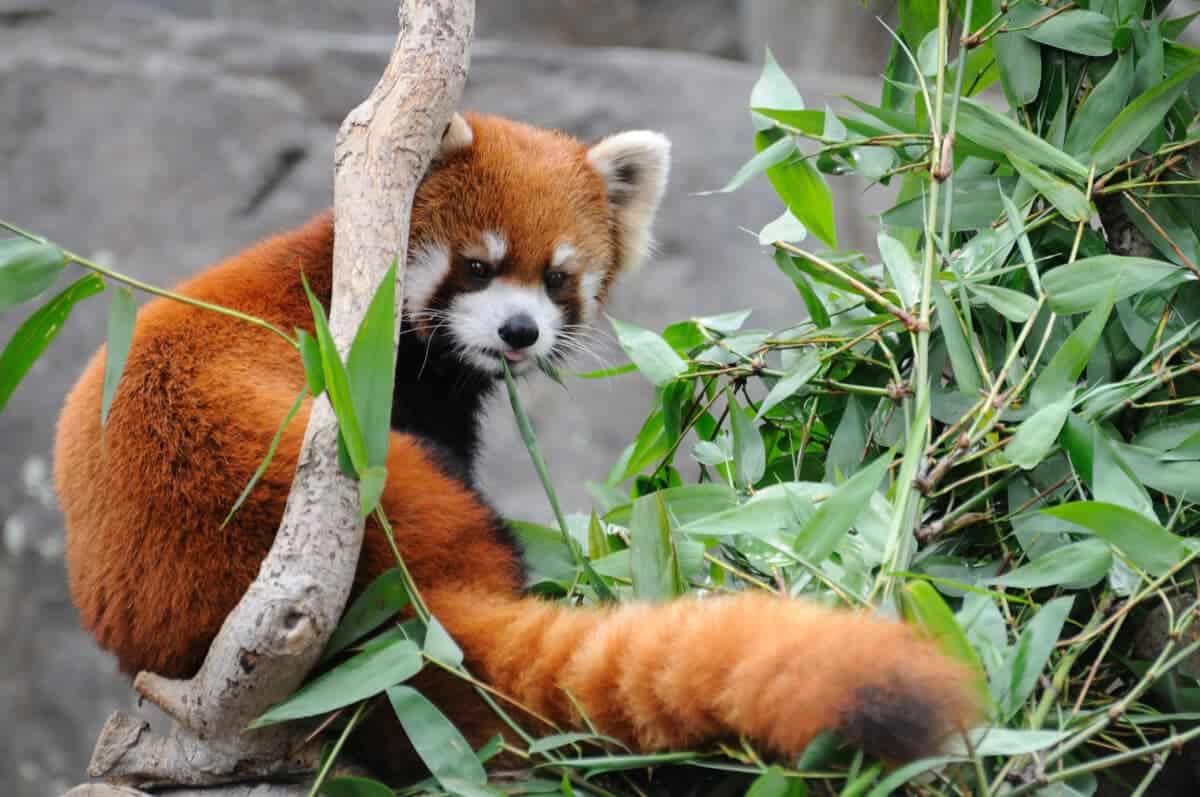
Perhaps one of the red panda’s most striking features is its luxurious, bushy tail. Making up almost half of their total length, this impressive appendage serves multiple practical purposes: it provides balance during their arboreal activities, acts as a wraparound blanket during cold weather, and helps them blend into their natural habitat of reddish-brown moss and white lichen on trees. From an aesthetic perspective, the tail’s substantial volume and distinctive ringed pattern of alternating shades of red create a visual delight. When red pandas sleep, they often curl up with their tails wrapped around their bodies or use them as pillows, creating an irresistibly cute sleeping position that has become iconic in photos and videos of these animals.
Their Distinctive Ears

Red pandas have triangular, medium-sized ears with white inner fur that contrasts beautifully with their rusty-red outer fur. These ears are constantly moving and twitching as they monitor their surroundings, adding to their alert and curious appearance. Unlike many animals whose ears lie flat against their heads, red pandas’ ears stand upright on top of their heads, giving them a perpetually attentive look. The size and shape of their ears hit a perfect balance – they’re proportionate to their heads but large enough to create that appealing look that humans instinctively find endearing in young animals. The white fur tufts inside their ears are particularly striking against their red fur, adding another distinctive element to their already charming faces.
Playful Behaviors and Antics
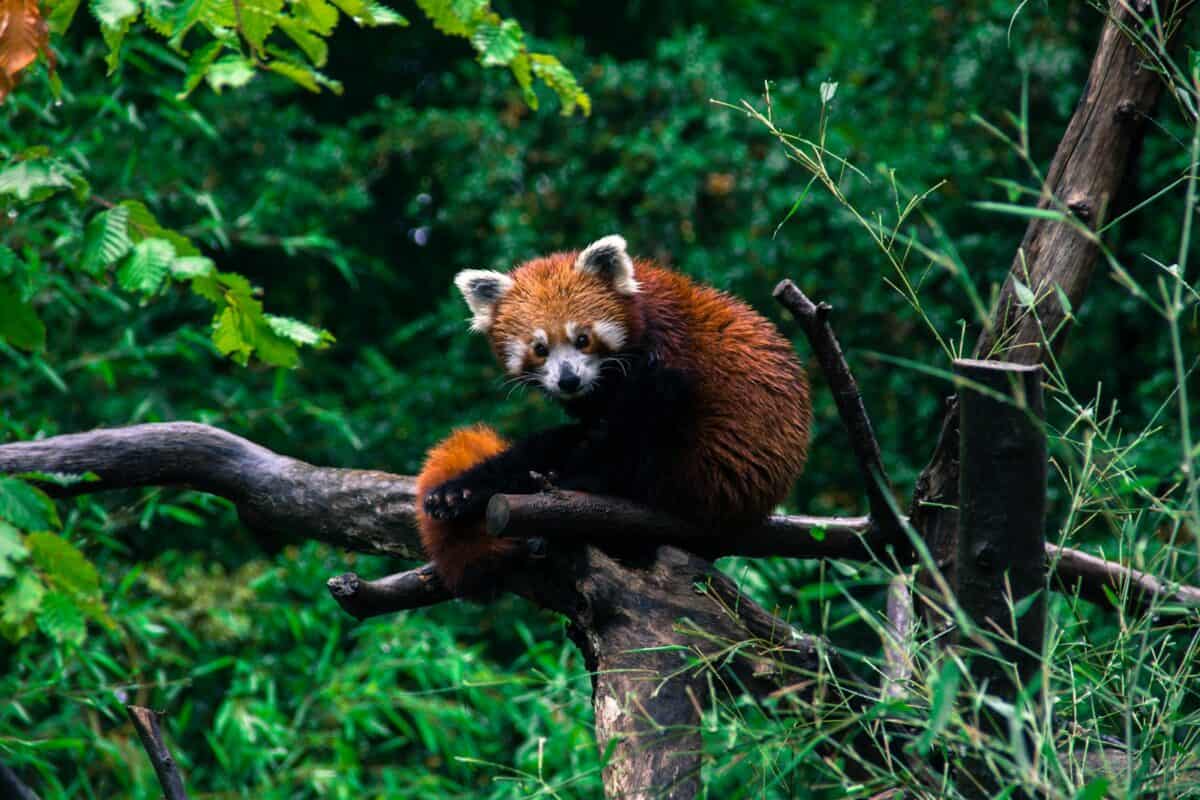
Red pandas are renowned for their playful nature, which contributes significantly to their adorable reputation. They frequently engage in behaviors that appear delightfully silly to human observers, including playful wrestling with conspecifics, rolling, and performing what has been termed the “red panda dance” – standing on their hind legs with their front paws raised. This bipedal stance, which they sometimes adopt when feeling threatened, looks remarkably like a cute defensive posture rather than an intimidating one. In captivity, they’ve been observed playing with enrichment items, investigating novel objects with cautious curiosity, and even enjoying games in the snow during winter. Their playful interaction with bamboo – their primary food source – often looks like they’re eating with tiny “hands,” further enhancing their appeal.
The “False Thumb” Adaptation

Red pandas possess a unique anatomical feature that adds to their charm: an extended wrist bone that functions like a thumb, despite not being a true digit. This “false thumb” is actually an extended wrist bone that has evolved to help them grasp bamboo stems and climb trees efficiently. When red pandas eat, they appear to be holding their food with what looks like small hands, creating an almost human-like quality to their feeding behavior. This adaptation allows for remarkably dexterous movements, and watching a red panda delicately handle bamboo shoots or fruit is mesmerizing. The sight of these small creatures seemingly “eating with their hands” triggers an anthropomorphic response in humans, making us relate to them more deeply and find them even more endearing.
Their Slow, Deliberate Movements
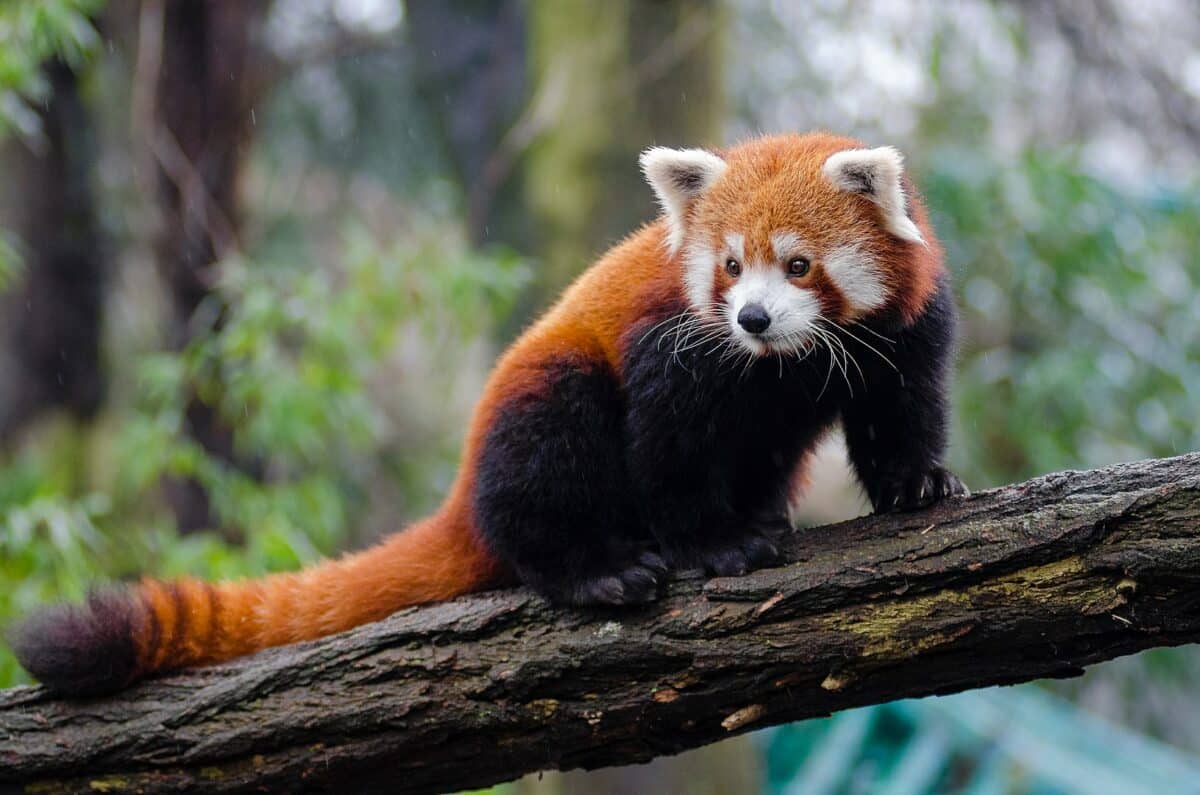
Unlike many small mammals that dart about quickly, red pandas often move with slow, deliberate grace, especially when navigating tree branches. This unhurried pace allows humans to appreciate their movements and expressions more fully. Their careful climbing style, using their semi-retractable claws and false thumbs to grip branches securely, creates a thoughtful, cautious impression. When on the ground, they adopt a distinctive waddling gait due to their short legs and somewhat plantigrade posture (walking with the entire sole of the foot on the ground). This combination of careful tree navigation and charming ground movement creates an overall impression of a thoughtful, deliberate creature that appeals to our preference for animals we can observe and appreciate at a relaxed pace.
Vocal Repertoire
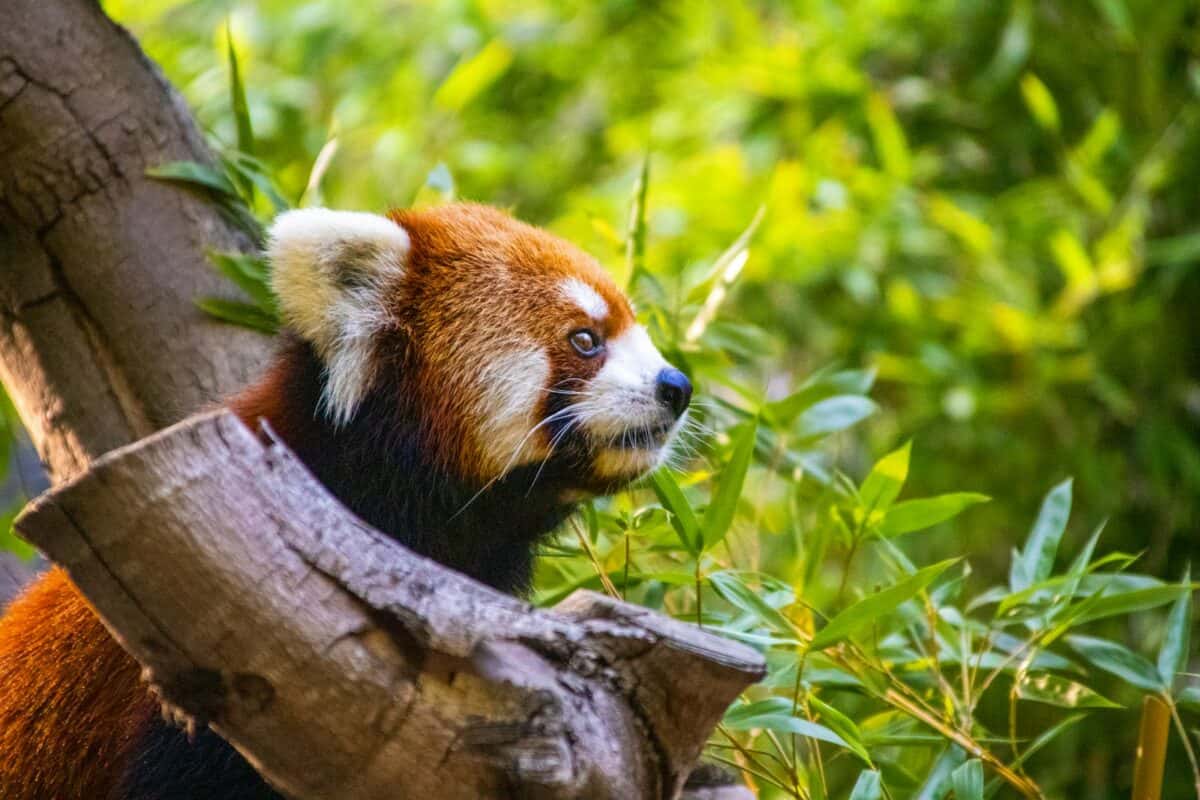
Red pandas communicate using an adorable array of vocalizations that further enhance their appeal. Their most distinctive sound is a high-pitched “twitch-twitch” or bird-like twitter that they use during the breeding season. When stressed or threatened, they may emit a series of snorts, huff-quacks, or even screams. However, the sound that most endears them to humans is their soft “huff-puff” – a gentle, almost whistling exhalation that sounds like a friendly greeting. Young cubs make an appealing chittering sound when seeking attention from their mothers. This diverse vocal repertoire, combined with their expressive faces, gives red pandas a communicative quality that humans find engaging and relatable, as though these animals are trying to speak to us in their own language.
The Contrast of Vulnerability and Resilience
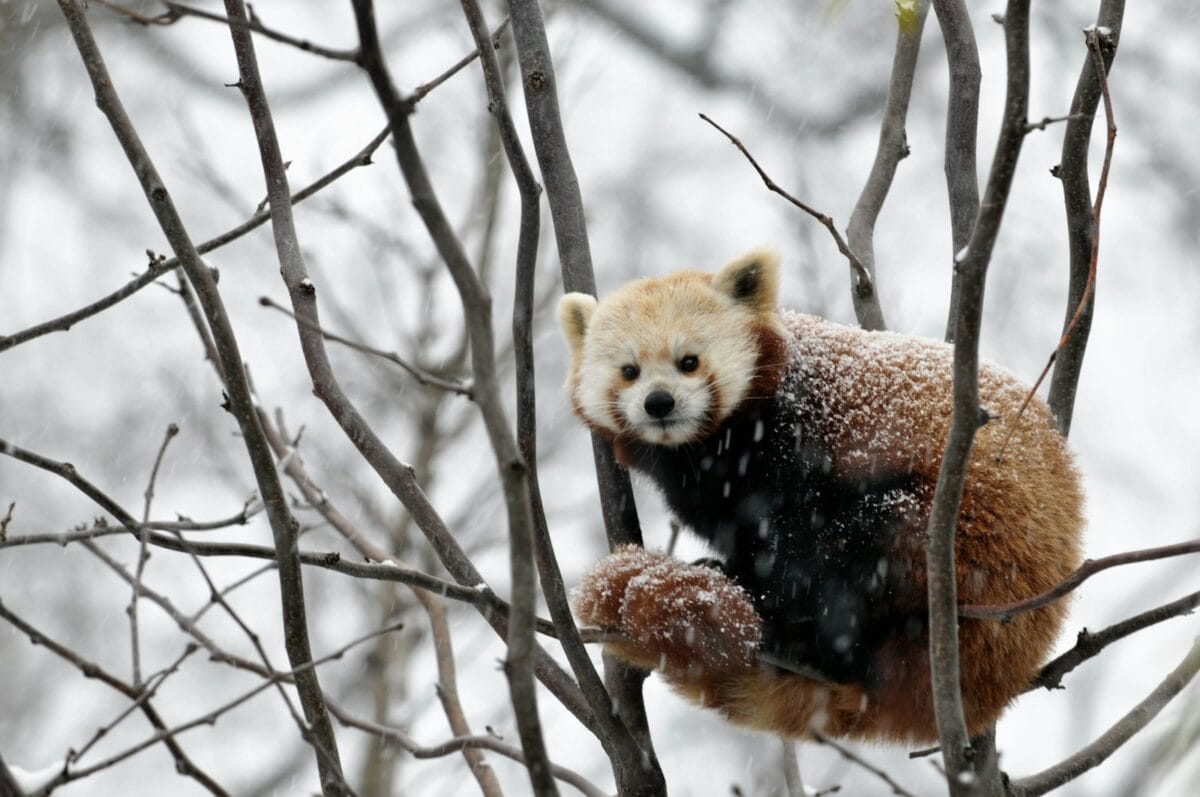
There’s something particularly touching about the red panda’s combination of apparent vulnerability and surprising resilience. These relatively small mammals survive in challenging mountainous environments, enduring cold temperatures and navigating a specialized diet that consists primarily of nutrient-poor bamboo. Despite their cuddly appearance, they’re remarkably adapted to their ecological niche, with specialized adaptations like their dense fur with water-resistant outer layer and their highly developed digestive system for processing bamboo. This juxtaposition – appearing delicate while actually being well-adapted survivors – creates a narrative that humans find particularly compelling. Their endangered status adds another layer to this dynamic, bringing out protective instincts in humans who learn about their declining numbers and habitat threats.
Cultural Significance and Media Presence

Red pandas have gained significant cultural prominence in recent decades, appearing in animated films, serving as mascots, and featuring prominently in zoo marketing campaigns. Mozilla Firefox’s logo was allegedly inspired by the red panda (though it now more closely resembles a fox), and the character “Master Shifu” in the popular “Kung Fu Panda” franchise is a red panda. These media representations have amplified awareness of red pandas and further cemented their status as adorable icons. Zoos worldwide report that red pandas are among their most popular attractions, with visitors often spending extended periods at their enclosures. This cultural visibility has been beneficial for conservation efforts, as the red panda’s adorable appearance has helped generate public interest in protecting them and their habitats.
The Science Behind Their Appeal

The red panda’s adorable qualities aren’t merely subjective – there’s actual science behind why humans find them so appealing. They possess many features that trigger what ethologists call the “cute response” or “baby schema” (Kindchenschema) – a set of physical characteristics that humans are evolutionarily programmed to find appealing. These include a large head relative to body size, large and forward-facing eyes, rounded body shape, and soft, plush appearance. This response is believed to have evolved as a mechanism to ensure that humans care for their offspring, but it extends to other species that display similar traits. Additionally, red pandas exhibit behaviors that suggest intelligence and emotional complexity, such as their careful manipulation of food and playful social interactions, which further enhances their appeal to humans who value these qualities.
Their Unique Evolutionary History

Part of what makes red pandas so fascinating is their unique evolutionary position. Despite their name, they are not closely related to giant pandas, nor are they bears or raccoons, though they share some characteristics with each. They belong to their own family, Ailuridae, and are considered a living fossil, being the only remaining member of this ancient lineage. This evolutionary distinctiveness adds an element of mystery and special appeal to red pandas. Their taxonomic history has been contentious, with scientists debating their classification for over a century. This combination of familiar features in an unfamiliar arrangement – looking somewhat like a fox, somewhat like a raccoon, but being related to neither – creates an intriguing novelty that draws human interest. Their distinctive appearance represents a unique evolutionary path that has produced a creature unlike any other on Earth.
Red pandas embody a perfect storm of adorable characteristics that make them irresistible to human observers. From their teddy-bear faces and expressive eyes to their plush bodies and magnificent tails, every aspect of their physical appearance seems designed to trigger our innate responses to cuteness. Their behaviors – from their deliberate movements to their playful antics and dexterous use of their “false thumbs” – further enhance their appeal by suggesting intelligence and personality. As their wild populations continue to decline due to habitat loss and fragmentation, the red panda’s adorable qualities serve an important conservation purpose, drawing attention to their plight and motivating protection efforts. In many ways, the red panda represents the perfect ambassador for wildlife conservation – a living reminder that the natural world contains unique treasures worth preserving for future generations to appreciate and enjoy.
- Koala Versus Kangaroo: How Australia’s Icons Differ in the Wild - August 16, 2025
- 10 Unique Animal Species That Can Only Be Found in the United States - August 15, 2025
- 10 Amazing Animals You Can Only Find in the United States - August 15, 2025

